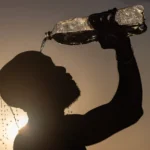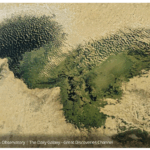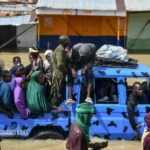Africa experienced one of its hottest years on record in 2024, bringing with it sweeping heatwaves, marine heat spikes, droughts and floods that left millions vulnerable. But in the face of this crisis, African institutions and communities are pioneering new ways to stay informed and adapt.
The World Meteorological Organisation’s latest State of the Climate in Africa report confirms that 2024 was either the hottest or second-hottest year the continent has recorded. Temperatures soared particularly in North Africa, where the region warmed by 1.28°C above the long-term average, making it Africa’s fastest-warming zone.
The extreme heat, partly driven by the El Niño phenomenon and global climate change, disrupted livelihoods across the continent.
El Niño is a natural climate pattern where warmer-than-usual ocean waters in the central and eastern Pacific disrupt global weather. It often leads to extreme conditions like droughts, floods, and heat waves in different parts of the world, including Africa.
In Sudan and Somalia, temperatures above 45°C in March forced schools to close and strained food supplies. In North Africa, a heat dome in July shattered previous records.
But the rising temperatures weren’t limited to land. For the second year in a row, the seas around Africa saw the largest extent of marine heatwaves since records began in 1993. These ocean temperature surges, which covered over 3 million square kilometres in early 2024, threaten marine biodiversity and heighten the risk of tropical storms.
The extremes didn’t stop there. While countries in West and Central Africa endured record-breaking floods, others in the south—like Zimbabwe and Zambia—faced their worst droughts in decades. In Morocco, a prolonged six-year drought cut agricultural production by 42 percent.
Despite these challenges, the report also shines a light on African-led climate action. In Nigeria, meteorological services now use digital platforms to provide farmers with real-time climate advisories. Kenya delivers forecasts through mobile apps and SMS, while South Africa has adopted AI tools and advanced radar systems to sharpen early warnings.
The WMO praised these developments, noting the importance of local solutions in protecting lives and livelihoods. “We are committed to strengthening adaptation efforts across Africa,” said Celeste Saulo, WMO secretary-general, while highlighting the early warnings for all initiative.
As climate risks grow, so too does the urgency for homegrown, tech-enabled responses. Across the continent, resilience is not just a buzzword—it is becoming a reality.










